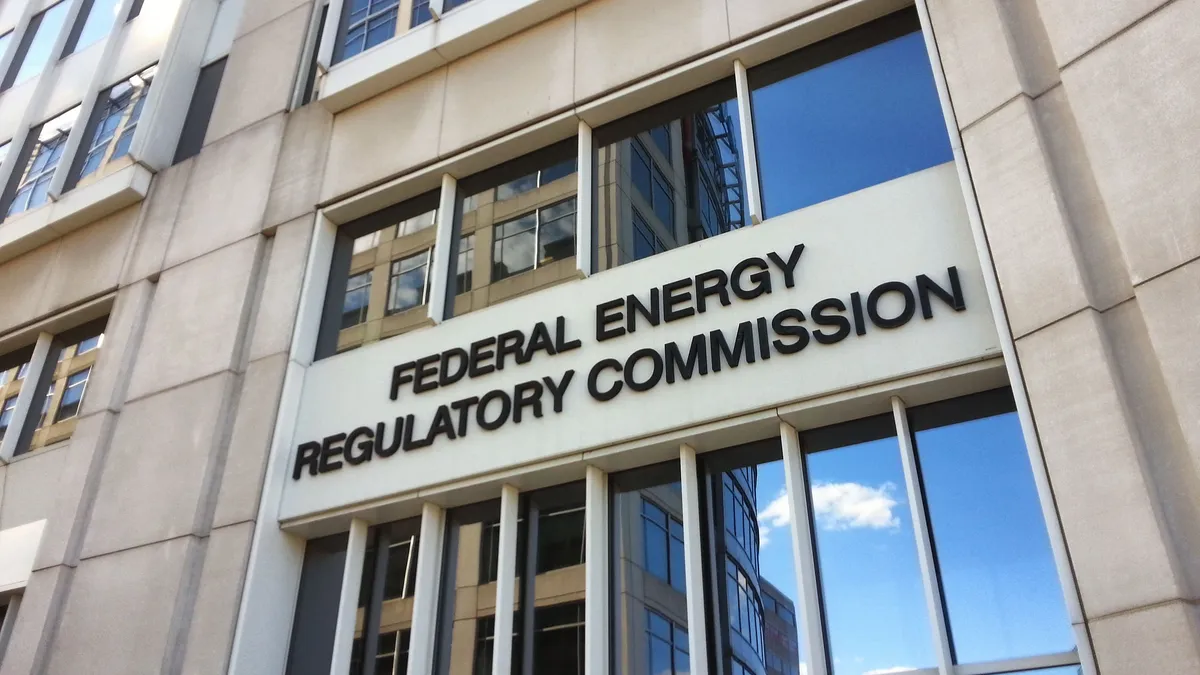Dive Brief:
-
Proposed changes to a 40-year-old clean energy law could put small renewables projects outside competitive wholesale markets at risk, clean energy and legal groups said Tuesday.
-
The Federal Energy Regulatory Commission in September proposed changes to the Public Utilities Regulatory Policies Act (PURPA), asserting their authority under a 2005 law. But some groups say the proposed updates are too aggressive and would undermine the law itself, in comments filed on the docket.
-
Utilities largely support the proposed rules, arguing they give states more flexibility in implementing PURPA by lowering the MW threshold qualifying facilities (QFs) must meet to be eligible for utilities to purchase their power under the federal law, and allowing utilities to pay varying rates rather than the avoided cost of generation for those QFs.
Dive Insight:
Federal regulators are considering significant changes to PURPA for the first time since Congress updated the statute in its 2005 Energy Policy Act, eliminating the must-buy rule in regulated markets where small renewable facilities had the competitive opportunity to sell to independent system operators and regional transmission operators organizations.
Comments on FERC's proposed changes were due Dec. 3, and many industry and legal analysts focused on whether the 2005 update authorized such changes in the first place. In addition to giving states the authority to allow utilities to pay market rates for the power produced by QFs, FERC's proposal would lower the threshold for qualifying facilities in RTO markets from 20 MW to 1 MW.
"[In my opinion,] FERC missed an [opportunity] here for compromise that would advance [the] competition goals of PURPA while addressing avoided cost concerns," Managing Director and General Counsel for Advanced Energy Economy Jeff Dennis said in a tweet Tuesday.
Utilities are largely supportive of the proposed changes, arguing the law's need has expired as renewable energy has become more cost competitive with traditional resources.
FERC in 2006 established the 20 MW threshold in response to the 2005 statute, but the commission now plans to lower that threshold. The "conservative" action did not take full advantage of the power granted by the statute change in 2005, said investor-owned utility trade group Edison Electric Institute.
Federal regulators "did not conduct a holistic review of its regulations implementing PURPA to determine if additional changes were needed in light of the changes in the industry between 1980 and 2006," the group wrote in its comments.
But clean energy and legal groups disagree, saying the changes could hurt small renewables providers in noncompetitive markets and that the notice of proposed rulemaking (NOPR) exceeds FERC's authority.
"PURPA was designed to allow competitive market entrants to drive change where monopolies refused to do so, yet certain of the changes proposed in the NOPR will give monopoly utilities more market power, not less," the Solar Energy Industries Association wrote in its comments.
The proposed rule "did a terrible job of distinguishing between the competitive market … and places that don't actually have competition for wholesale generation," SEIA Executive Vice President of Regulatory Affairs Katherine Gensler said at a regulatory conference in November. "For those that have no competition at the wholesale level and generally no competition at the retail level, it is still 1978."
PURPA acted as a "backstop" for QFs in non-market regions, said Ari Peskoe, director of the Electricity Law Initiative at Harvard Law School, on Twitter. "FERC's proposal would reduce competition in these regions, reinforce utility dominance, and harm innovation."














